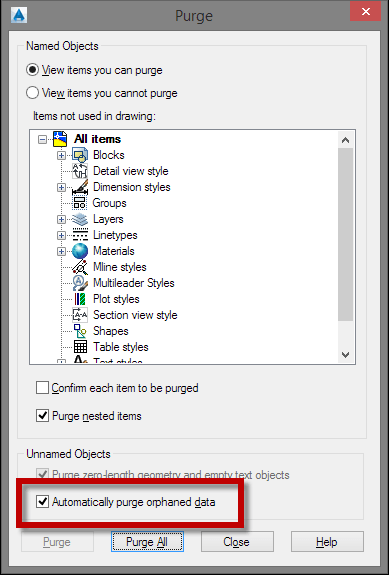
The eTransmit utility copies all files associated with a drawing to a specified location, and those files can then be submitted with the drawing.

Tip: Use the eTransmit utility to avoid this kind of problem in the future. The routine does not delete shapes displayed in the drawing. Note: This routine only deletes shapes in the drawing that reference unavailable shape files. The routine runs and returns the following information on the command line:
Open the problem drawing, and use the APPLOAD command to load the delshape.lsp routine. Save the text file as delshape.lsp, and exit the text editor. (if (or (= (ssmemb entity shapes_name) nil)) (while (and (< n nshapes) (/= shapes nil) (/= shapes_name nil)) (if (and (= shapes_name nil) (/= shapes nil)) (setq shapes_name (ssget "X" (list (cons 0 "SHAPE") (cons 2 "*")))) load this file and run the new command DELSHAPE This routine deletes all shapes in the drawing Note: It might be necessary to save to DXF twice to fully clean the drawing along with purging. Open the DXF file ( DXFIN command) Use the PURGE command, selecting all options. UING PURGE IN AUTODESK AUTOCAD 2010 CODE
Copy and paste the following AutoLISP code into the text file created in the previous step. Use the DXFOUT command to save a DXF file.Use a text editor (for example, Microsoft® Notepad) to create a new text file.You can then load the drawing without error.

 Purge references to unavailable shape files. Erase shape objects that reference unavailable shape files. The solution provides an AutoLISP® routine that you can use to This solution is for situations where you are unable to obtain the missing shape files, and you know you can remove them without affecting the validity of the drawing. Do not use this solution unless you are sure you can remove the missing shape objects without affecting the validity of the drawing. Warning: This solution permanently and irreversibly removes missing shape objects from the drawing. With those items purged from the drawing, you'll be able to also purge the reference to the missing SHX file.Īlternately, the method described below can be used: Once found, change linetype assignments and/or remove objects that use the missing SHX file. Go through the drawing and determine which objects or linetypes refer to the missing SHX file.
Purge references to unavailable shape files. Erase shape objects that reference unavailable shape files. The solution provides an AutoLISP® routine that you can use to This solution is for situations where you are unable to obtain the missing shape files, and you know you can remove them without affecting the validity of the drawing. Do not use this solution unless you are sure you can remove the missing shape objects without affecting the validity of the drawing. Warning: This solution permanently and irreversibly removes missing shape objects from the drawing. With those items purged from the drawing, you'll be able to also purge the reference to the missing SHX file.Īlternately, the method described below can be used: Once found, change linetype assignments and/or remove objects that use the missing SHX file. Go through the drawing and determine which objects or linetypes refer to the missing SHX file.







 0 kommentar(er)
0 kommentar(er)
